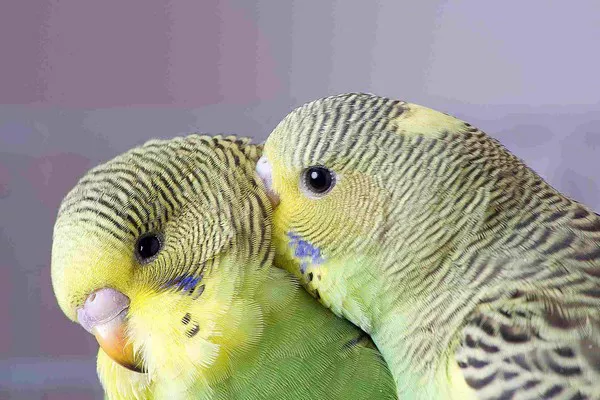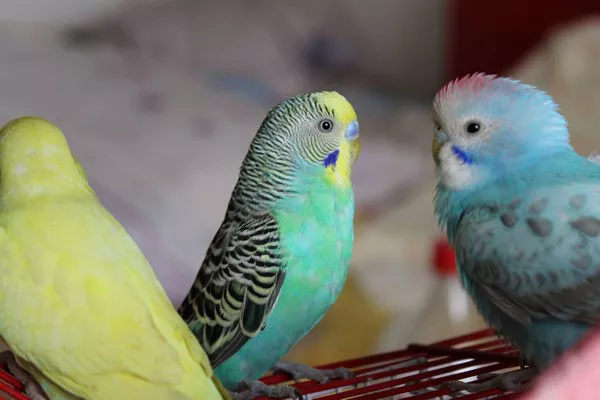Cockatiels are beloved companion birds known for their charming personalities and vibrant plumage. To ensure these feathered friends live a happy and healthy life, providing them with a suitable cage is of utmost importance. When it comes to selecting the ideal enclosure for your pet cockatiels, one of the most crucial questions that often arises is, “What size cage for 2 cockatiels?” In this comprehensive guide, we will explore the essential aspects of cockatiel cages, including size, materials, and other considerations to provide the best possible environment for your avian companions.
1. Understanding the Right Size for Two Cockatiels
The first and most pressing question any prospective cockatiel owner faces is, “What size cage for 2 cockatiels?” Cockatiels are social birds, and housing them together can be a rewarding experience. However, it’s vital to provide ample space to accommodate their needs. A suitable cage for two cockatiels should have dimensions of at least 24 inches in width, 24 inches in depth, and 24 inches in height. This generous size allows your birds room to spread their wings and move about comfortably. Keep in mind that a larger cage is always better as it provides more opportunities for exercise and exploration.
2. Materials Matter
Selecting the right materials for your cockatiel’s cage is another crucial consideration. Most bird cages are constructed from metal, such as stainless steel, powder-coated steel, or wrought iron. Stainless steel is highly recommended due to its durability and resistance to rust, making it a long-term investment. Powder-coated steel and wrought iron are also viable options, but they require regular maintenance to prevent rust. Avoid cages made of materials like wood or plastic, as they can be harmful to your pet birds and are difficult to clean.
3. Bar Spacing
An often overlooked aspect of cage selection is the spacing between the bars. The bar spacing is crucial to prevent your cockatiels from escaping or getting their heads stuck between the bars. For cockatiels, the ideal bar spacing should be around 1/2 inch (1.27 cm) to 5/8 inch (1.59 cm). This range ensures your birds’ safety while allowing them to climb and play within the cage.
4. Cage Shape
Cage shape is another consideration to keep in mind. While rectangular or square-shaped cages are the most common and practical choices, you can also opt for dome-shaped or aviary-style cages. The key is to ensure that the cage offers enough space for your two cockatiels to fly, stretch their wings, and engage in natural behaviors.
5. Cage Accessories
A well-equipped cockatiel cage should include various accessories to keep your birds happy and stimulated. These can include perches, food and water dishes, and toys. Make sure to position perches at different heights to encourage exercise and prevent pressure sores on your birds’ feet. Additionally, toys are essential for mental stimulation and preventing boredom. Rotating toys in and out of the cage can help keep your cockatiels engaged and entertained.
6. Location, Location, Location
The placement of your cockatiel cage within your home is also a vital consideration. Cockatiels are social birds and thrive when they are in the heart of the household’s activities. Position the cage in a room where your birds can interact with family members and observe daily life. However, avoid areas with drafts, direct sunlight, or heavy traffic, as these can stress your birds.
7. Cleaning and Maintenance
Regular cleaning and maintenance of your cockatiel cage are essential for your birds’ well-being. Cleaning should include scrubbing and disinfecting the cage bars, perches, and accessories. Replace cage liner papers or trays, as well as food and water dishes daily. A clean environment helps prevent diseases and provides a healthier habitat for your feathered friends.
8. Cage Security
To ensure your cockatiels remain safe and secure in their cage, invest in a cage with sturdy locks and latches. Clever and agile, cockatiels can be quite adept at escaping from poorly secured enclosures. Check the cage’s locking mechanisms regularly to ensure they are functioning correctly.
9. Additional Considerations
In addition to the basics, there are some other factors to consider. Cockatiels love to chew, so provide them with safe, non-toxic chew toys to satisfy their natural behavior. Ensure that your cage has a removable tray or grate at the bottom for easy cleaning. Offering a variety of perches with different textures and diameters can also help maintain your birds’ foot health.
10. Budget and Long-Term Investment
While it’s tempting to look for budget-friendly options, it’s crucial to view a cockatiel cage as a long-term investment. Investing in a high-quality, spacious, and durable cage can save you money and provide a better quality of life for your cockatiels in the long run. Cheap cages may need frequent replacement and can lead to costly vet bills if your birds’ health is compromised due to poor living conditions.
In conclusion, the question of “What size cage for 2 cockatiels” is a critical one for any prospective or current cockatiel owner. Providing a spacious, well-constructed cage that takes into account the safety and comfort of your birds is essential. Stainless steel or powder-coated steel cages with the right bar spacing, shape, and cage accessories, when positioned in a suitable location, will create a healthy and happy environment for your cockatiels. Remember that maintaining and securing the cage is just as important as selecting the right one. By adhering to these guidelines, you’ll ensure your pet cockatiels enjoy a comfortable and enriching life in their new home.
Related Topics:
How to gain a cockatiels trust?
Are cockatiels highly intelligent?
How old can cockatiels live?























